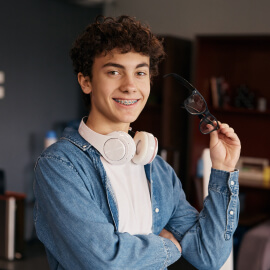The Evidence Paradox in Paediatric Dysarthria Management
As paediatric speech pathologists, we routinely work with children presenting with dysarthria—a motor speech disorder affecting tone, strength, and coordination of speech muscles. For children who acquire dysarthria before three years of age, the impacts can be particularly profound, affecting not just articulation but potentially limiting communicative participation and social engagement during critical developmental periods. Many of us implement various speech therapy approaches, from traditional articulation therapy to newer motor learning paradigms, operating on theoretical principles and clinical experience. However, a crucial question emerges: Are these interventions genuinely effective?
A 2016 Cochrane systematic review by Pennington and colleagues addresses this very question, with results that should give our profession pause for reflection. This review examined whether speech and language therapy interventions for children with early acquired dysarthria are more effective than no intervention, and compared the efficacy of different therapeutic approaches. The findings—or rather, the lack thereof—highlight a significant gap in our evidence base that demands attention from clinicians, researchers, and the broader allied health community.
What Does the Research Reveal About Current Evidence in Paediatric Dysarthria Intervention?
The systematic review conducted by Pennington et al. (2016) was comprehensive in scope, searching multiple databases including the Cochrane Central Register of Controlled Trials, MEDLINE, EMBASE, and numerous others up to July 2015. The authors employed rigorous methodology, seeking randomised controlled trials (RCTs) or quasi-experimental designs investigating speech therapy interventions for children with early acquired dysarthria.
The results were stark: no randomised controlled trials or group studies meeting the inclusion criteria were identified. This absence of evidence does not imply evidence of absence regarding intervention effectiveness, but it does highlight a critical gap in our knowledge base. Descriptive and phase I/II studies have suggested potential benefits of speech therapy interventions for this population, but without controlled trials, we cannot confidently assert their effectiveness compared to natural development or determine which approaches might be superior.
This finding is particularly significant for Australian speech pathology practice, where we frequently implement interventions for children with dysarthria without robust evidence guiding our clinical decision-making. The review underscores that our current approaches, while theoretically sound, lack empirical validation through rigorous experimental designs.
How Should Speech Pathologists Navigate Clinical Decision-Making in This Evidence Vacuum?
The absence of high-quality evidence presents a significant challenge for clinical practice. As speech pathologists committed to evidence-based practice, we find ourselves in the difficult position of needing to support children with early acquired dysarthria while lacking scientific validation for our interventions.
In this context, clinical decision-making necessarily relies more heavily on theoretical knowledge, clinical expertise, and careful consideration of individual client factors. While this approach is not ideal, it reflects the reality of current practice in many areas of paediatric speech pathology where evidence lags behind clinical need.
For Australian speech pathologists, particularly those providing telehealth services across diverse geographical contexts, this evidence gap reinforces the importance of:
- Transparent communication with families about the state of evidence 2. Careful baseline assessment and ongoing monitoring to document individual responses to intervention 3. Consideration of broader communication needs beyond speech production alone 4. Integration of functional communication strategies alongside speech-focused interventions 5. Collaborative goal-setting with families to prioritise outcomes most meaningful to the child’s daily life
This approach acknowledges limitations while maximising potential benefits through individualised, thoughtful clinical reasoning—a necessity until stronger evidence emerges.
What Outcome Measures Should Guide Assessment and Intervention Planning?
The review highlights important considerations regarding outcome measurement in dysarthria intervention. While speech intelligibility is often a primary focus in clinical practice, Pennington and colleagues emphasise the importance of measuring communicative participation and quality of life outcomes.
This recommendation aligns with contemporary thinking in speech pathology that prioritises functional, participation-focused outcomes over impairment-level changes alone. For children with early acquired dysarthria, improvements in speech production are certainly valuable, but their significance largely derives from enabling greater participation in social, educational, and community contexts.
Australian speech pathologists should consider adopting a multi-dimensional approach to outcome measurement that includes:
- Standard measures of speech intelligibility and speech production – Functional communication measures in naturalistic contexts – Participation measures across educational and social domains – Quality of life instruments sensitive to communication challenges – Parent/caregiver perspectives on communication effectiveness
This comprehensive approach to measurement provides a more complete picture of intervention effects while generating valuable clinical data that might contribute to future research efforts.
What Research Priorities Should Guide Future Studies in Paediatric Dysarthria?
The systematic review concludes with strong recommendations for future research, emphasising the need for rigorous, fully powered randomised controlled trials. These recommendations provide a roadmap for addressing the current evidence gap:
- Investigation of whether positive changes observed in preliminary studies are generalizable to the broader population of children with early acquired dysarthria 2. Examination of effects on speech production and intelligibility 3. Assessment of impacts on participation in social and educational activities 4. Measurement of quality of life outcomes 5. Evaluation of intervention costs and acceptability
For Australian researchers and clinician-researchers, these priorities offer clear direction for developing studies that could significantly advance our knowledge base. Collaborative research networks spanning academic and clinical settings would be particularly valuable in recruiting sufficient participants for adequately powered studies in this relatively low-prevalence population.
Telehealth delivery models, increasingly common in Australian speech pathology practice, may facilitate multi-site research designs that overcome geographical limitations and enable larger sample sizes. Such approaches could be particularly beneficial in studying interventions for children in regional and remote communities, where access to specialised services is often limited.
Balancing Clinical Need and Evidence: The Way Forward
The findings from this Cochrane review highlight a fundamental tension in paediatric speech pathology: the need to provide services to children with communication difficulties despite incomplete evidence. For children with early acquired dysarthria, the absence of RCT evidence does not mean we should withhold intervention, but rather that we must approach our clinical work with appropriate caution and commitment to advancing the evidence base.
As paediatric speech pathologists in Australia, we have both a clinical and ethical responsibility to:
- Implement interventions based on best available evidence, including theoretical frameworks and preliminary research when RCTs are unavailable 2. Communicate honestly with families about evidence limitations 3. Carefully document outcomes to contribute to practice-based evidence 4. Support and participate in research initiatives that address identified gaps 5. Advocate for research funding to enable the necessary high-quality studies
By balancing immediate clinical needs with a commitment to improving future evidence, we can provide the best possible support for children with early acquired dysarthria while working toward more definitive knowledge about intervention effectiveness.
If you or your child need support or have questions, please contact us at Speech Clinic.
What is early acquired dysarthria and how does it affect children’s communication?
Early acquired dysarthria is a motor speech disorder resulting from neurological damage that occurs before three years of age. It affects the tone, strength, and coordination of speech muscles, causing difficulties that range from mild articulation and voice quality issues to severe impairments that make speech nearly unintelligible. The condition impacts not only speech production but can significantly affect a child’s ability to participate in conversations, educational activities, and social interactions, potentially influencing developmental trajectories across multiple domains.
Should my child receive speech therapy for dysarthria despite the lack of evidence from randomised controlled trials?
While the Cochrane review found no RCT evidence for speech therapy effectiveness, this doesn’t mean intervention should be withheld. Clinical decision-making should consider theoretical knowledge, preliminary research, and individual factors. A qualified speech pathologist can conduct comprehensive assessment, establish baseline communication skills, and develop tailored intervention plans with measurable goals. Regular progress monitoring can help determine if the chosen approach is beneficial for your child specifically, even as the field works toward stronger evidence at the population level.
How do speech pathologists determine appropriate goals for children with early acquired dysarthria?
Goal-setting for children with dysarthria involves comprehensive assessment of speech production, intelligibility in various contexts, functional communication needs, participation patterns, and quality of life. Speech pathologists typically collaborate with families to identify communication scenarios most important to the child’s daily functioning, considering educational requirements, social participation, and family priorities. This person-centred approach ensures interventions address meaningful outcomes beyond isolated speech parameters, focusing on enabling communication that enhances participation and well-being within the child’s unique context.
What alternative communication strategies might benefit children with dysarthria alongside speech therapy?
For children with significant dysarthria, multimodal communication approaches often provide valuable support. These may include augmentative and alternative communication (AAC) systems ranging from low-tech options like communication books to high-tech speech-generating devices, as well as gesture, key word sign, or systematic pointing systems. These approaches can reduce communication frustration while speech therapy progresses, ensuring children maintain communicative participation regardless of speech intelligibility. A qualified speech pathologist can assess which complementary strategies best meet a child’s needs and integrate them with ongoing speech-focused intervention.
How can parents support speech therapy goals for children with dysarthria at home?
Parents play a crucial role in reinforcing speech therapy goals through consistent practice in naturalistic contexts. Speech pathologists typically provide specific home practice activities tailored to therapy targets, which might include speech exercises, strategic communication opportunities, or practice with alternative communication methods. Creating a supportive communication environment where the child feels comfortable attempting speech, using visual supports when helpful, and celebrating communication attempts (not just correct production) can significantly enhance therapy outcomes. Regular collaboration between parents and speech pathologists ensures home support aligns optimally with therapeutic objectives.

















